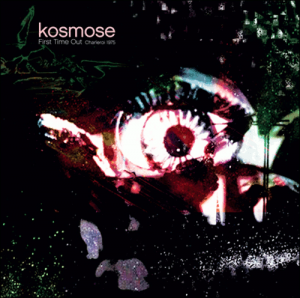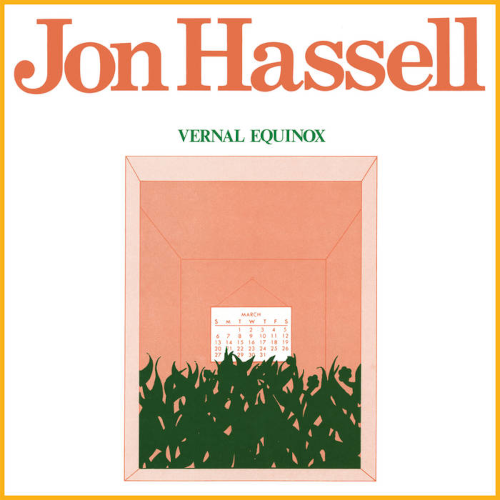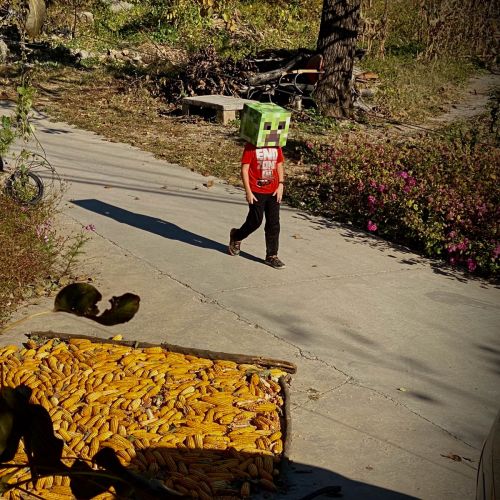 As soon as the files were securely on the MP3 player of choice, I listened to First Time Out on the train, sipping coffee and watching the sun-dappled Essex countryside flash by outside. It was an unseasonably warm autumn day and, as the train stopped at Tilbury East, two butterflies were fluttering madly around the station sign at the far end of the platform.
As soon as the files were securely on the MP3 player of choice, I listened to First Time Out on the train, sipping coffee and watching the sun-dappled Essex countryside flash by outside. It was an unseasonably warm autumn day and, as the train stopped at Tilbury East, two butterflies were fluttering madly around the station sign at the far end of the platform.
Watching their chaotic flightpaths and thinking about the music, an image popped unbidden into my mind’s eye. SPOILER ALERT. At the end of Mel Gibson’s eye-popping 2006 Yucatec Maya gore-a-thon, Apocalypto,i two murderous raiders pursue the protagonist, Jaguar Paw, through the jungle and out towards the coast. As they reach the beach,ii all three are suddenly stopped dead in their tracks by an utterly confounding sight: a flotilla of enormous black conquistador ships anchored just off the coast, and landing parties of Europeans already making their way ashore by rowing boat, the cross of the Lord held firmly in their grasp.
This album, recorded live in 1975, seems to capture an analogous musical moment in which a progressive rock culture at its very zenith is about to be halted on the beach, confronted with the black ships of punk, their magnificent flags emblazoned not with a Cross of Burgundy but with a Circle A anarchy symbol, and their seemingly-loutish foot-soldiers already just hoving into view. Like the Mayans in the early sixteenth century, progressive rock (with a small p)iii was approaching its pinnacle by the mid-point of the 1970s, yet would soon be swept away, for a time at least, by the deluge of Year Zero Punk and, later, the truly changed musical landscape of the 1980s.
But, like John Hammond and InGen™, through the virtual grooves of First Time Out we can now recreate miraculously the long extinct biosphere of a distant past, and revel in its wonders. And on that score, Kosmose give us plenty to work with.
The band formed organically in Charleroi, Belgium over a period of several years from the late 1960s onwards. They were something of a free-floating collective, one “without a leader”, pulling in a loose conglomerate of talented local players to be anchored around the duo of multi-instrumentalist Alain Neffe and bass player Francis Pourcel. Rehearsing every Sunday in the house Pourcel shared with his brother Freddy in the city’s industrial area of Marchienne-au-Pont, the musicians would ensconce themselves in the attic and improvise extended instrumental pieces, ones which were entirely unplanned and unstructured, extemporised voyages that took the improvisational aesthetic of avant-garde jazz and applied it within a “rock” context. There were no drums, nothing to tie the music up in any four to the floor straightjacket, and no soloing; all contribution had to work for the collective sound, not for the glory of any virtuoso instrumentalist.Thinking very much in terms of Gesamtkunstwerk, however, Kosmose did not stop merely at the musical. The visual presentation of their music was as diligently explored as the sound itself, the other Pourcel brother – something of a master DIY electrical wizard – here coming into his own. As Alain Neffe recalls:
Sound and visuals were inextricably linked; they formed a whole. Freddy had invented a mechanical device which paired two projectors, and it allowed him to modulate, fade and compose abstract pictures (projected on the band and a giant screen) from slides… photo negatives, tinted glass and film stock that he would scratch or treat with acid. He could synchronise the pace of his creations with the beat of the band. He was able to put together extremely fast and jerky sequences, but also very slow ones, and accompany them with a light show… it was like an abstract, changing film. Each rehearsal and concert was unique in terms of sound, visuals length…
Despite the evident effort that Kosmose expended in order to shape their vision, the band played only a dozen or so concerts during their lifetime, all in the Charleroi area. And it is from one of these shows, in March 1975, that the two pieces on First Time Out are drawn. Recorded on (by today’s standards) comparatively primitive portable tape-recording facilities, the quality is nevertheless astonishingly sharp, Neffe having taken much recent trouble to restore the vintage tapes.With Neffe himself improvising on “monophonic synthesizer, flute, primitive rhythm box, bell, clumsy voice [and] tarang”,iv Pourcel on bass and guitar, and Daniel Malempré on electric and 12-string acoustic guitars, First Time Out is delicious carbonnade à la flamande of sound: rich, highly textured and immensely satisfying. Modulating leisurely around different textures, tempos and levels of intensity, this is out-there rock of a kind that they just don’t make like this any more. Kosmose lasted until 1978, taking their little piece of rock Valhalla in a year that was chronologically hardly an eye-blinker later, but musically a very different era indeed. One could shell out a small (large) fortune on a battery of immaculate old Binson Echorecs, but, just as dressing up in a costume doesn’t make you a Mayan, so the aesthetic and the approach Kosmose take here isn’t one amendable to modern recreation, too knowing by half as it would undoubtedly be.
On a dark, damp late winter night in Wallonia, it must have been quite something to squeeze into the venue and have one’s mind completely blown the audio-visual spectacle documented here. And thankfully, with this sumptuous reissue,v one can do so again. Pound the wet November pavements until your bell-bottoms are properly soaked, then pop this on your gramophone and turn up the dial until your third eye opens.-David Solomons-
i Generally, I’m not much given to referencing Mel Gibson. As a youngster, I loved (and still do) Mad Max, but due to Gibson’s fairly odious outbursts on a number of topics, I’ve tended to stay clear of him in recent years. I borrowed a DVD of Apocalypto from my friend Philip so as not to contribute to his revenue stream (Gibson’s, not Philip’s).
ii Bonus points for any astute reader who picked up that (mostly unintentional) reference.
iii And yes, I am fully aware of how ludicrous that sounds.
iv The bulbul tarang – “wave of nightingales” – is a truly delicious instrument from the Punjab, a beautiful confection that sits on a very idiosyncratic spectrum somewhere midway between a zither and a typewriter. In the context of Western rock, its electrified cousin, the shahi baaja can be heard to masterful effect when used by Reading’s outstanding Sun Skeletons.
v The companion album, Music From The Black Country, compiles similarly restored band tapes from rehearsals and other live shows and is also available from all good record stores.



